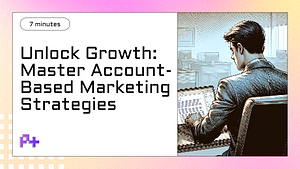1. What is Customer Acquisition Cost (CAC)?
Customer Acquisition Cost (CAC) is a critical metric for businesses that indicates the total cost associated with acquiring a new customer. This figure encompasses various expenses, including marketing, advertising, sales team salaries, and any other costs incurred during the customer acquisition process. By calculating CAC, businesses can gain insights into the efficiency of their marketing strategies and overall sales effectiveness. Understanding this metric is essential for determining the return on investment (ROI) of marketing campaigns and ensuring that customer acquisition efforts are sustainable in the long run.
To calculate CAC, businesses typically divide the total costs spent on acquiring new customers over a specific period by the number of customers gained during that same timeframe. For example, if a company spends $10,000 on marketing and sales efforts in a quarter and acquires 100 new customers, the CAC would be $100. This simple calculation provides a clear picture of how much a business is investing to grow its customer base. It is crucial to monitor CAC regularly, as fluctuations can indicate the effectiveness of changing marketing strategies or shifts in market conditions.
Reducing Customer Acquisition Cost is a goal for many businesses, as a lower CAC can lead to higher profitability. Strategies to achieve this include optimizing marketing channels, refining targeting efforts, improving customer retention rates, and enhancing customer referral programs. By focusing on these areas, businesses can ensure that they are not only acquiring customers efficiently but also creating long-term value. Ultimately, a thorough understanding of CAC empowers companies to make informed decisions about their marketing budgets and growth strategies, leading to sustained success in a competitive marketplace.
2. How to Calculate Customer Acquisition Cost
Calculating Customer Acquisition Cost (CAC) is essential for any business looking to optimize its marketing strategy and improve profitability. To determine your CAC, start by identifying all the costs associated with acquiring new customers over a specific period. This includes marketing expenses such as advertising campaigns, promotional activities, and sales team salaries, as well as overhead costs like software tools and operational expenses. Once you have a comprehensive list of these costs, sum them up to get your total acquisition expenses.
Next, you need to determine the total number of new customers gained during the same period. This number is crucial as it provides the denominator for your CAC calculation. You can track new customers through various channels, such as website analytics, customer relationship management (CRM) systems, or sales reports. After obtaining both the total costs and the number of new customers, you can calculate your CAC by dividing the total acquisition costs by the number of new customers acquired. For example, if your total marketing expenses are $10,000 and you acquire 100 new customers, your CAC would be $100.
Understanding your customer acquisition cost is vital for assessing the efficiency of your marketing strategies. A lower CAC indicates that your marketing efforts are cost-effective, while a higher CAC suggests that you may need to optimize your strategies to enhance customer engagement and retention. Moreover, comparing your CAC with the customer lifetime value (CLV) can provide deeper insights into your businesss profitability. Ideally, your CAC should be significantly lower than your CLV to ensure sustainable growth. By regularly calculating and analyzing your customer acquisition cost, you can make informed decisions that drive your business success.
3. The Importance of CAC in Business Strategy
Customer acquisition cost (CAC) is a critical metric that measures the total cost of acquiring a new customer, encompassing various expenses such as marketing, advertising, sales, and promotional efforts. Understanding CAC is essential for businesses as it directly impacts profitability and growth strategies. By analyzing this metric, companies can make informed decisions about their marketing budgets, sales strategies, and resource allocation. A high CAC may indicate inefficiencies in the acquisition process, prompting businesses to refine their strategies to lower costs and improve return on investment (ROI).
Incorporating CAC into business strategy allows for better forecasting and financial planning. Companies can use this metric to determine the lifetime value (LTV) of a customer, helping to establish a sustainable business model. By comparing CAC to LTV, businesses can assess whether their customer acquisition efforts are yielding profitable returns. If the CAC is significantly higher than the LTV, it signals the need for reevaluation of marketing channels, sales tactics, and overall customer engagement strategies. Thus, optimizing CAC can lead to enhanced profitability and long-term success.
Moreover, understanding the importance of CAC fosters a customer-centric approach within an organization. By focusing on reducing acquisition costs, businesses are often compelled to improve their value propositions, enhance customer experiences, and offer targeted marketing campaigns that resonate with their audience. This not only helps in acquiring new customers but also in retaining them, ultimately leading to higher customer loyalty and advocacy. By continuously monitoring and optimizing CAC, businesses can ensure that their strategies are aligned with market demands and customer expectations, driving sustained growth and competitive advantage.
4. Strategies to Reduce Customer Acquisition Costs
Reducing customer acquisition costs (CAC) is a critical goal for businesses looking to enhance profitability and sustain growth. One of the most effective strategies is optimizing your marketing channels. By analyzing the performance of various platforms—such as social media, email marketing, and paid advertising—you can identify which channels yield the highest return on investment (ROI). Focus your resources on these high-performing areas while minimizing or eliminating spending on underperforming channels. Utilizing analytics tools to track customer interactions can also provide insights into where your audience is most engaged, allowing for more focused and cost-effective campaigns.
Another powerful approach to lowering CAC is improving your sales funnel through better targeting and personalization. By honing in on your ideal customer profile and segmenting your audience, you can create tailored marketing messages that resonate more deeply with potential buyers. This personalization not only increases the likelihood of conversion but also enhances customer experience, fostering loyalty and encouraging word-of-mouth referrals. Implementing automated marketing solutions can help deliver the right message at the right time, further streamlining your efforts and reducing unnecessary costs.
Finally, investing in content marketing can significantly lower customer acquisition costs in the long run. High-quality, informative content attracts organic traffic and builds brand authority, leading to increased trust and conversions without the hefty price tag associated with traditional advertising. Strategies such as creating valuable blog posts, engaging videos, and informative infographics can attract potential customers over time. Additionally, leveraging search engine optimization (SEO) ensures your content ranks well in search results, drawing in a steady stream of leads with minimal ongoing costs. By combining these strategies, businesses can effectively reduce their customer acquisition costs and cultivate a sustainable growth model.
5. Understanding CAC in Relation to Customer Lifetime Value (LTV)
Understanding the relationship between Customer Acquisition Cost (CAC) and Customer Lifetime Value (LTV) is crucial for any business aiming to optimize its marketing strategy and enhance profitability. CAC is the total cost incurred to acquire a new customer, which includes marketing expenses, sales team salaries, and technology costs. On the other hand, LTV represents the total revenue a business can expect from a customer throughout their entire relationship. By analyzing these two metrics together, businesses can gain insights into how effectively they are converting potential customers into long-term revenue sources.
When the CAC is compared to LTV, it helps organizations assess the sustainability of their customer acquisition strategies. A healthy business model typically maintains a ratio where LTV is significantly higher than CAC, often recommended to be at least 3:1. This means that for every dollar spent on acquiring a customer, the business should expect to earn three dollars in return over the customer’s lifetime. Understanding this balance allows companies to identify whether they are overspending on acquisition efforts or if they need to enhance their customer retention strategies to maximize LTV.
Moreover, evaluating CAC in relation to LTV can inform strategic decisions regarding resource allocation and marketing tactics. For instance, if the CAC is rising while LTV remains stagnant, it may indicate that the marketing strategies need to be reevaluated or that the product or service does not meet customer needs effectively. By continuously monitoring and adjusting these metrics, businesses can ensure they are not only attracting customers but also nurturing them into loyal, lifelong advocates, thus enhancing overall profitability and business growth.



